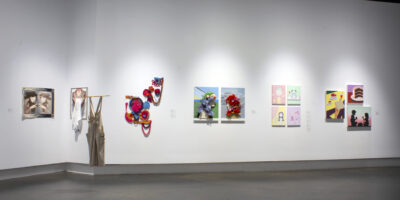With the wild success of franchises like Harry Potter, The Lord of the Rings, and The Hunger Games it is obvious that Hollywood is cashing in on ready-made stories with an amazing fan base. But this kind of success doesn’t necessarily lead to a good movie, especially if the producers decide to get creative and ‘make the story their own’ or just let the movie ‘inspire’ them. People have probably heard me complain about horrible adaptations before, so this time I’m going for the exact opposite: movies that are better than the original book for one reason or another.
The first series is not really a series, but more of a collection, as they are all written by the exact same author; Michael Crichton. Crichton is probably best known for writing Jurassic Park and The Lost World, but he wrote around twenty books before his death in 2008, with fourteen of them made into movies. Crichton wrote Rising Sun (starring Sean Connery and Wesley Snipes), Disclosure (starring Michael Douglas and Demi Moore ), Sphere (staring Dustin Hoffman, Sharon Stone, and Samuel L. Jackson), The 13th Warrior (starring Antonio Banderas), Timeline (starring Gerard Butler and David Thewlis), among others.
Obviously Michael Crichton’s stories could never have made great movies if they weren’t great themselves, but I find the movies to be better. In most of his books Crichton is long winded and spews a lot of techno-babble, his books can have lots of subtle meaning and developed plot lines. This kind of thing can work in movies but you need to have the running time to invest in it, and you need captivating characters to keep the audience’s attention – Crichton sometimes lacks that. The movies are a great summary of the story- you have all the necessary technology to make the sci-fi work without the lengthy explanation (like the time travel in Timeline) and sometimes multiple characters are combined into a single person or two character’s personalities and storylines are completely swapped to make for a better story.
Take Jurassic Park, for example. In the book John Hammond is kind of the villain, he never learns from his mistakes and dies at the end. In the movie he is played by Richard Attenborough, and the character is changed to a loving grandfather who realizes his mistakes and destroys his own park before going into a philanthropic mode for the second movie. In Timeline the time machine in the book is capable of travelling to any time and place, while holding a single person and having to be summoned to their location. The movie instead uses a single large machine that was designed to revolutionize the shipping business as a kind of teleporter, but is instead locked into a specific time and place (Castlegard, France, in the Hundred Year’s War). When anybody wants to return they activate a marker that triggers the machine to pull them back. The story functions more smoothly, with a simpler design and explanation for the machine that does not detract from the main storyline.
So let’s get away from Michael Crichton and look at some classics novels that have all received the Hollywood treatment over the years. The Three Musketeers is a great story by Alexander Dumas, but when I finally read it I was totally blown away by the fact that the story was very different than the movie I had grown up watching. Since I was five, my favourite movie adaptation (there have been over 20 of them) has been the 1993 Disney version starring Chris O’Donnell, Charlie Sheen, Kiefer Sutherland, Oliver Platt, and Tim Curry. It is a simpler, almost slapstick story in many places, but it is a great swashbuckling adventure. Oh, and on a side note, there are actually a few books in the D’Artagnan Romances; The Three Musketeers (1844), Twenty Years After (1845), and The Vicomte de Bragalonne (1847), the last of which is published in three volumes in most English editions as The Vicomte de Bragelonne, Louise de la Valliere, and The Man in the Iron Mask.
Another great Alexander Dumas story is The Count of Monte Cristo (released in serialized form in 1845-1846), and there are a ton of movie adaptations of this story too. One of my favourites is the 2002 version starring Richard Harris (Dumbledore in the first two Harry Potter movies), James Caviezel and Guy Pearce. This version takes a lot of liberties with the story, completely cutting out entire storylines and characters, and also completely changing the ending (it is a much more Hollywood ending than the original suicide and murder filled one). The changes result in a more action oriented story, as the original featured extensive planning for revenge rather than the revenge itself.
So there are a couple of examples of great movie adaptations that don’t necessarily have to follow the story, but of course there are probably die-hard fans of Crichton’s work that probably hated the movies for cutting so much out – but that is the nature of fandom. I will never stop complaining about my own most hated movie adaptations, but I have to acknowledge that there are some great ones out there that might possibly have improved on the original. So check them out and read the original story as well, seeing another person’s interpretation of a beloved classic is a great look into art and the human mind.




Leave a Reply